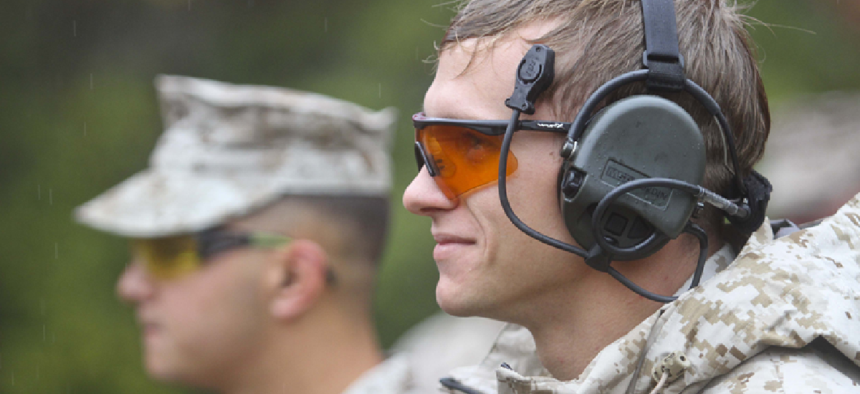Where did that shot come from? Knowing is half the battle

Researchers are developing a program that uses microphones in protective headgear to analyze the direction of gunfire and send that info to a smartphone.
Whether it’s military combat or an active-shooter situation in a local school, it's essential to know is the location of the shooter. Unfortunately, even under the best of conditions -- with no obstacles deflecting sound waves -- it can be tough to tell where a shot came from if responders can’t see the shooter.
Making things even more difficult, the tactical communication and protective systems (TCAPS) -- the ear-coverings worn that support communications and protect soldiers' and responders' hearing from explosions and the sound of their own weapons -- can further mask the direction of gunshots.
Acoustic researchers in France, financed by the French government, are developing a program that helps soldiers and responders locate the source of gunfire using a smartphone.
Sébastien Hengy, a combat acoustics researcher at the French-German Research Institute of Saint-Louis, has developed a proof-of-concept that uses the microphones in TCAPS to capture a shooter's acoustic information and send a display of the shooter’s location to a soldier's smartphone in real time.
TCAPS have four microphones: two outside the ear canal and two inside it, underneath the hearing protection.
According to Hengy, most modern combat weapons fire bullets at supersonic speeds, creating two acoustic waves. The first is a supersonic shock wave that travels in front of the bullet and propagates outward in a cone shape. A second muzzle wave radiates spherically in all directions from the explosion of the bullet in the barrel.
"Our system uses the microphone underneath the hearing protection in order to detect the shock and muzzle waves generated by supersonic shots and record the time difference of arrival of the Mach wave between the left and right ear," Hengy said in a statement. When the information sent by all the TCAPS deployed on the field is combined, a reveals the direction of the waves -- which can effectively point back to the shooter.
This information is sent via Bluetooth or USB to a soldier's smartphone, which uses a data fusion algorithm developed by Hengy to calculate the shooter's position.
"If it's a smartphone with a good processor, the computation time to get the complete trajectory is about half a second," Hengy said, noting that once a soldier begins returning fire, the location system automatically turns off.
What if there’s more than one shooter? Hengy told GCN that, at least under certain conditions, his system can handle the challenge. It depends on how widely separated the shooters are. If the shooters are more than 30 degrees apart relative to the TCAPS receivers, the device “theoretically allows estimating the direction of arrival of each shooter and hence estimates the shooter’s position for each detected shooter.”
Warfighters don't need to pull up the app to determine a shooter's general direction. When a shot is detected, Hengy’s app sends a warning tone to the TCAPS from the direction of the threat. The system tracks the user’s head position using a 9-axis absolute orientation sensor. It compensates for the head’s orientation in real-time and generates the warning tone, he explained. “This gives an intuitive feedback on where the threat is, and users can rapidly go away from the danger zone without having to look at the smartphone.”
While the information is currently transmitted via “spatialized audio display,” there’s no reason it couldn’t also be displayed on augmented reality glasses or other devices, he said.
Hengy and his team are expecting to test the system in the real world beginning in September, and they hope for deployment as early as 2021.
NEXT STORY: DARPA dives into undersea networks





